Gochugaru, the vibrant red chilli flakes or powder synonymous with Korean cuisine, holds a special place in the hearts and palates of food enthusiasts worldwide. As a cornerstone ingredient in Korean cooking, gochugaru not only brings heat but also infuses dishes with its distinct smoky-sweet flavour profile. From the fiery depths of kimchi to the comforting warmth of stews and soups, gochugaru weaves its magic, transforming ordinary ingredients into culinary masterpieces. This article embarks on a journey to explore the multifaceted world of gochugaru, delving into its rich history, culinary uses, health benefits, and cultural significance. Join us as we uncover the secrets behind this essential spice and celebrate its role in Korean cuisine and beyond.
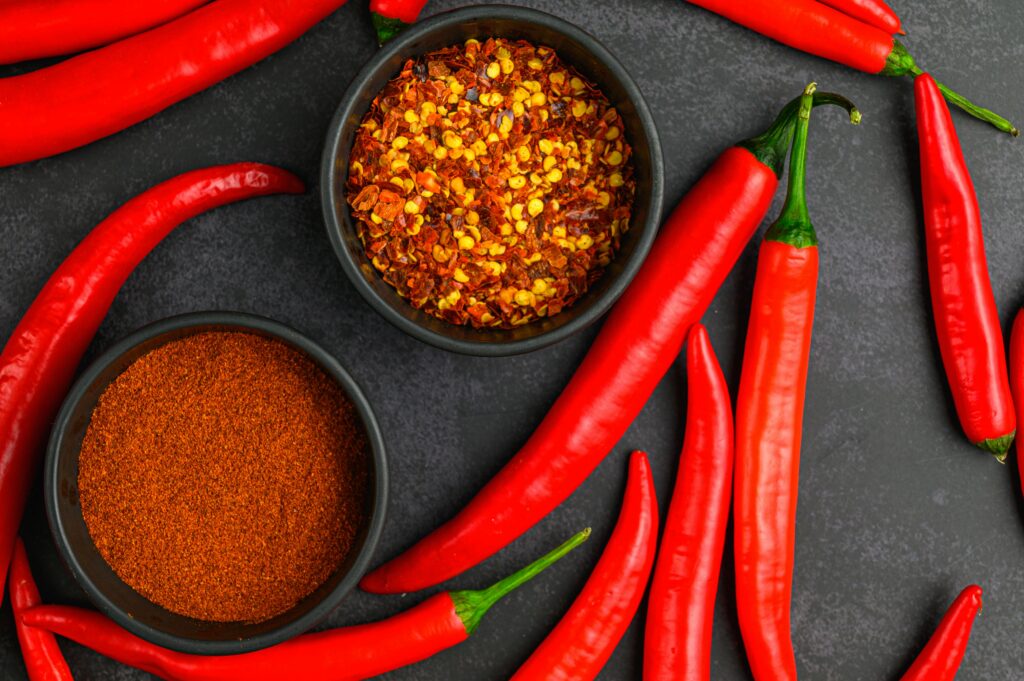
Gochugaru and Honey: A Perfect Pairing
In addition to its standalone use, gochugaru often finds itself combined with other ingredients to create complex flavours and textures. One such popular pairing is gochugaru and honey. This combination balances the heat of the chilli flakes with the sweetness of honey, resulting in a harmonious blend of flavours that enhances both savoury and sweet dishes. Gochugaru-infused honey can be drizzled over grilled meats for a spicy-sweet glaze, stirred into dressings or marinades to add depth and complexity, or even incorporated into desserts for a unique twist. The versatility of this pairing showcases the creative possibilities that gochugaru offers in the kitchen, allowing cooks to experiment and innovate with new flavour combinations.
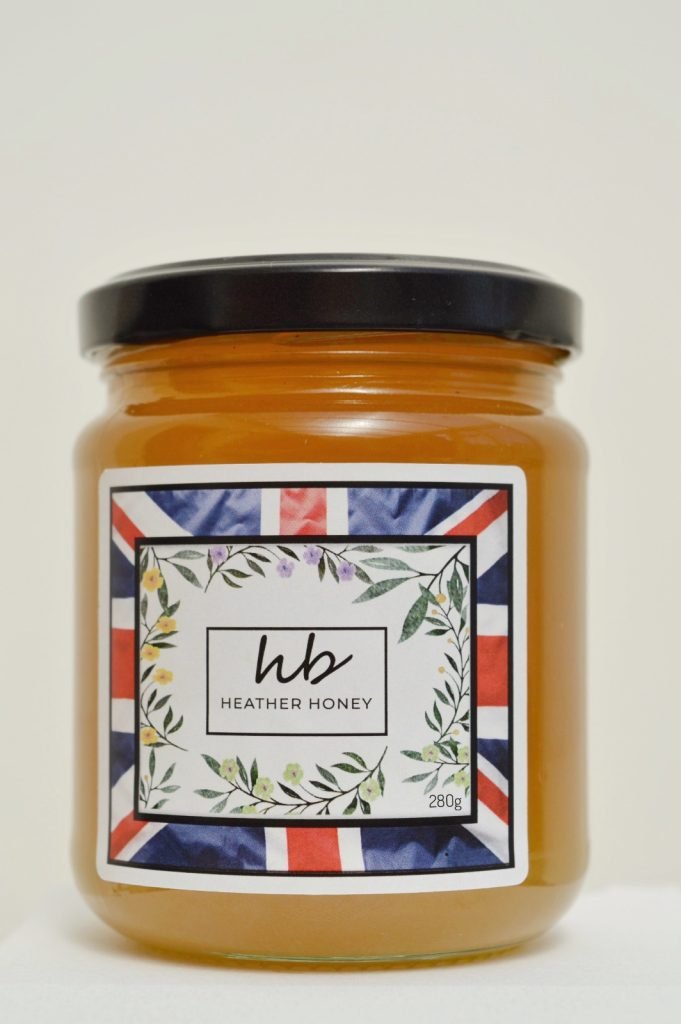
History and Origins
Gochugaru’s roots are traced back centuries in Korean culinary tradition. Chilli peppers were introduced to Korea in the late 16th century via trade with the Americas, quickly becoming integrated into Korean cuisine. Initially used as a medicinal ingredient, chilli peppers gradually became a staple spice in Korean cooking. The process of drying and grinding chilli peppers to create gochugaru dates back to ancient times, with traditional methods involving sun-drying the peppers before grinding them into flakes or powder using stone mills. Over time, gochugaru became an indispensable ingredient in iconic Korean dishes such as kimchi, bulgogi, and tteokbokki, reflecting its evolution from an import to a fundamental component of Korean gastronomy.
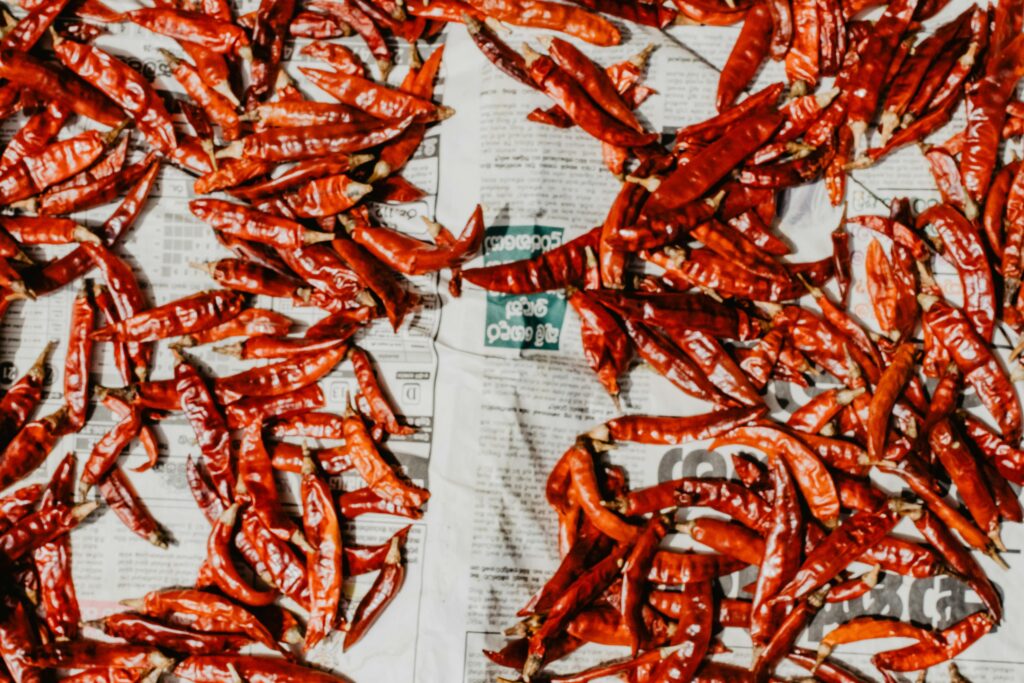
Production Process
The production of gochugaru begins with the cultivation and harvesting of ripe chilli peppers. Traditionally, Korean farmers carefully select premium chilli peppers and sun-dry them on straw mats, allowing them to develop their flavour and colour naturally. Once dried, the peppers are destemmed and deseeded before being ground into coarse flakes or fine powder. While traditional stone mills were once commonplace, modern production facilities now utilize machinery to streamline the grinding process while maintaining the quality and authenticity of gochugaru. Despite advancements in technology, many artisanal producers continue to uphold traditional methods, believing that they yield superior flavour and aroma in the final product.
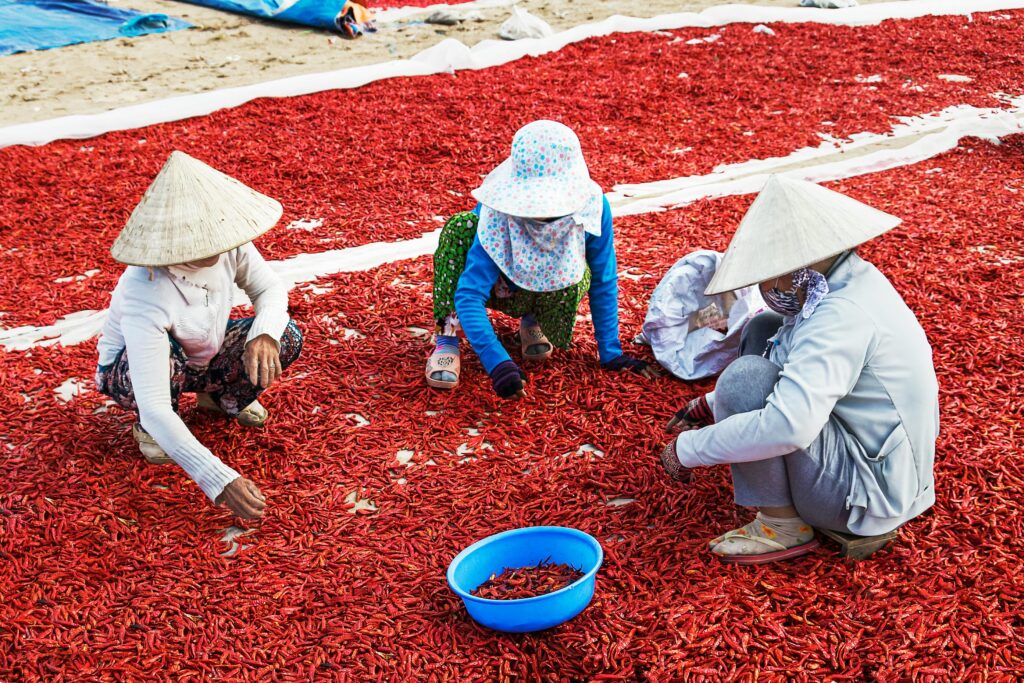
Culinary Uses
Gochugaru’s versatility extends across a myriad of Korean dishes, imparting its signature heat and depth of flavour. In kimchi, gochugaru serves as the primary seasoning, infusing the fermented cabbage with its characteristic spiciness and contributing to its vibrant red hue. Beyond kimchi, gochugaru features prominently in soups, stews, marinades, and sauces, adding complexity to dishes such as doenjang jjigae (soybean paste stew) and dakbokkeumtang (spicy braised chicken). Its smoky-sweet flavour profile also pairs well with other ingredients, making it a popular choice for seasoning meats, vegetables, and even noodles. Whether sprinkled on top of a savory pancake or mixed into a dipping sauce, gochugaru elevates every dish it touches, earning its place as a beloved staple in Korean cuisine.
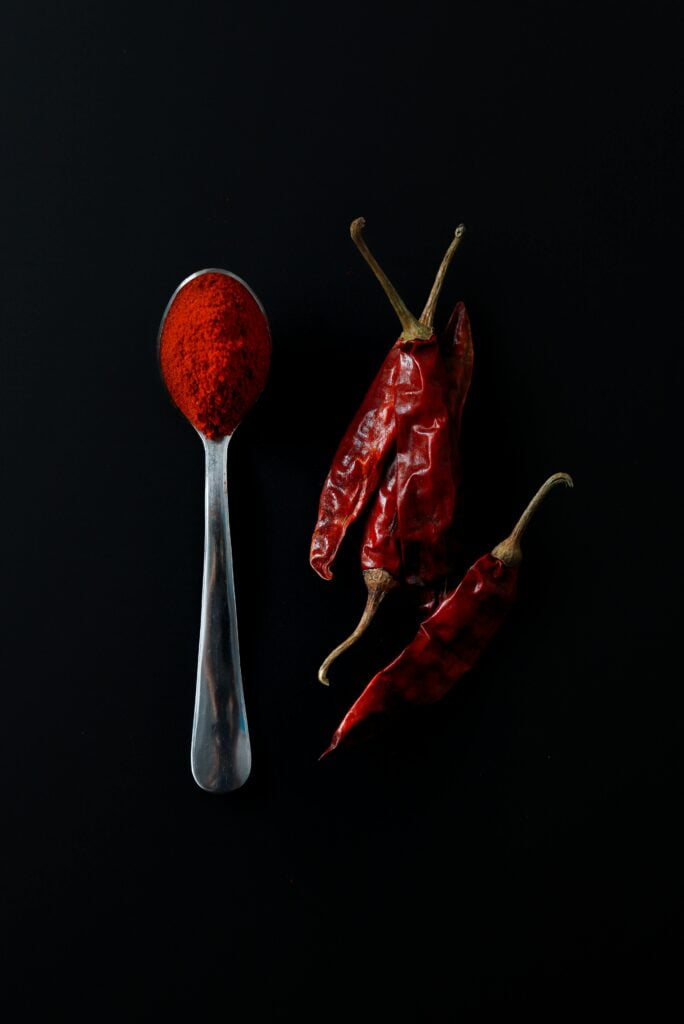
Flavor Profile and Heat Level
Gochugaru’s flavor profile is characterized by a delicate balance of heat, sweetness, and subtle smokiness. Unlike chilli powders that can overwhelm the palate with intense spiciness, gochugaru offers a more nuanced heat that allows its underlying flavours to shine through. The heat level can vary depending on factors such as the variety of chilli peppers used and the presence of seeds during the grinding process. Generally, gochugaru imparts a moderate level of heat that is well-tolerated by most individuals, making it accessible to a wide range of palates. Its unique flavour profile adds depth and complexity to dishes, enhancing the overall dining experience without overpowering other ingredients.
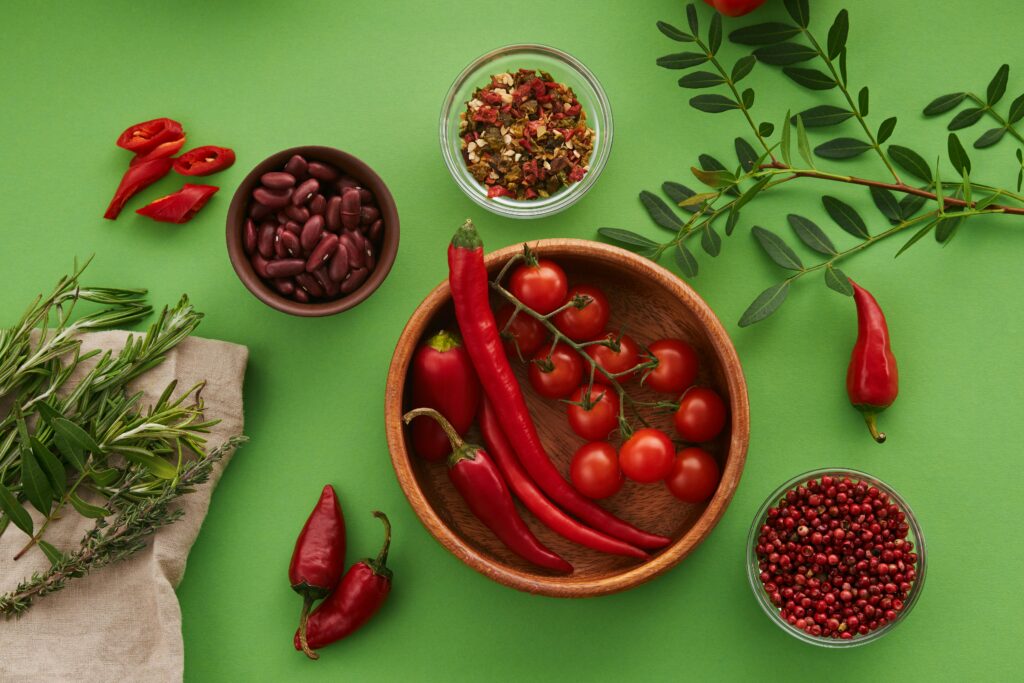
Health Benefits
Beyond its culinary appeal, gochugaru boasts a range of potential health benefits. Rich in vitamins, minerals, and antioxidants, chili peppers, the primary ingredient in gochugaru, have been associated with various health-promoting properties. Capsaicin, the compound responsible for the heat in chilli peppers, has been studied for its potential anti-inflammatory, analgesic, and metabolism-boosting effects. Additionally, chilli peppers are a good source of vitamin C, vitamin A, and dietary fibre, all of which are essential for overall health and well-being. While gochugaru should be consumed in moderation, its inclusion in a balanced diet may contribute to improved health outcomes and enhanced culinary enjoyment.
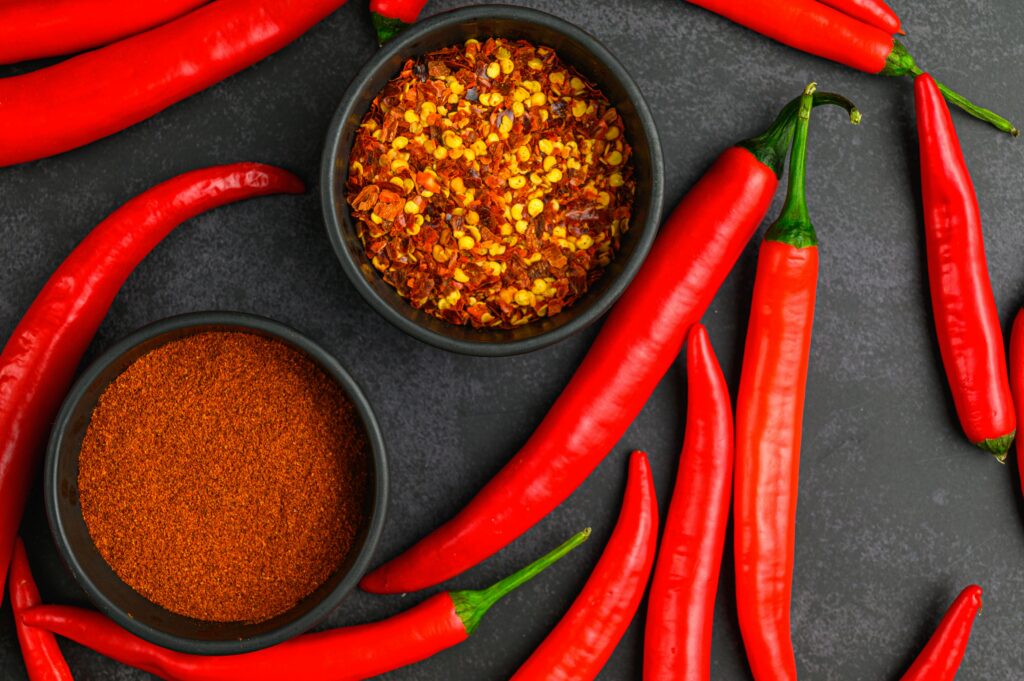
Cultural Significance
In Korean culture, gochugaru holds a revered place as both a culinary staple and a symbol of tradition and heritage. Its presence in traditional dishes reflects the enduring connection between food, culture, and identity in Korean society. Gochugaru is not merely a seasoning but a cultural artefact that embodies the resilience and ingenuity of Korean culinary tradition. From family gatherings to festive celebrations, the aroma of gochugaru wafting from the kitchen evokes a sense of warmth and nostalgia, reminding Koreans of shared memories and cherished traditions. As Korean cuisine continues to gain recognition on the global stage, gochugaru serves as a cultural ambassador, introducing the world to the rich tapestry of flavours and traditions that define Korean gastronomy.
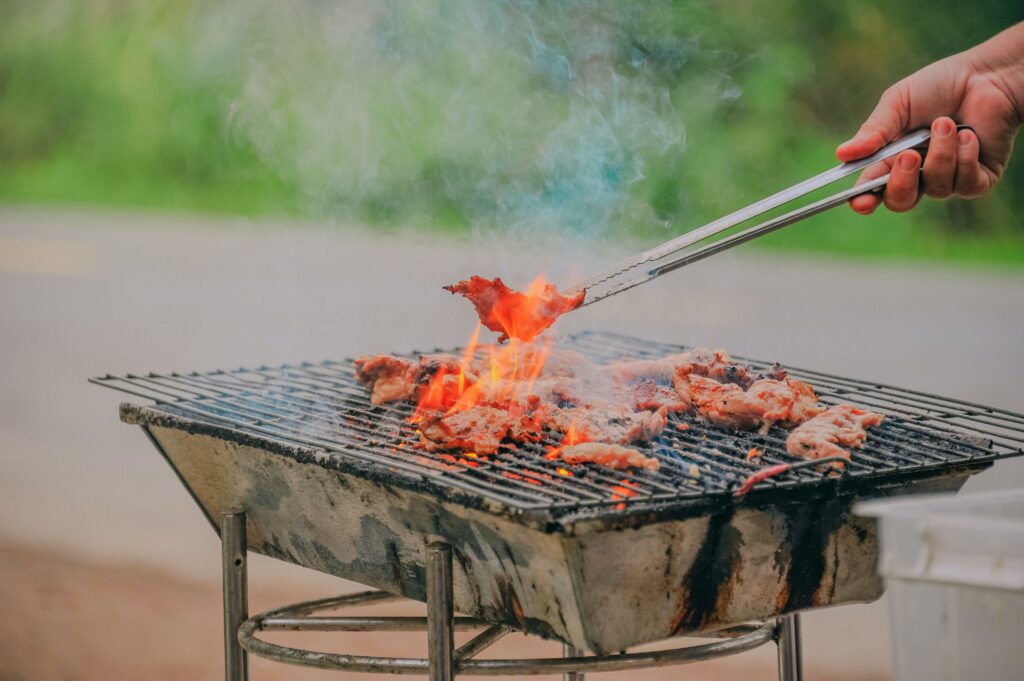
Buying and Storing Gochugaru
When purchasing gochugaru, it is essential to select a high-quality product to ensure optimal flavour and freshness. Look for gochugaru that is vibrant red in colour with a slightly coarse texture, indicating that it has been sun-dried and ground to the ideal consistency. While gochugaru is widely available in Korean markets and specialty grocery stores, it can also be purchased online from reputable suppliers. Once opened, store gochugaru in an airtight container in a cool, dark place away from direct sunlight and moisture. Proper storage will help preserve its flavour and aroma for an extended period, allowing you to enjoy its culinary delights whenever inspiration strikes.
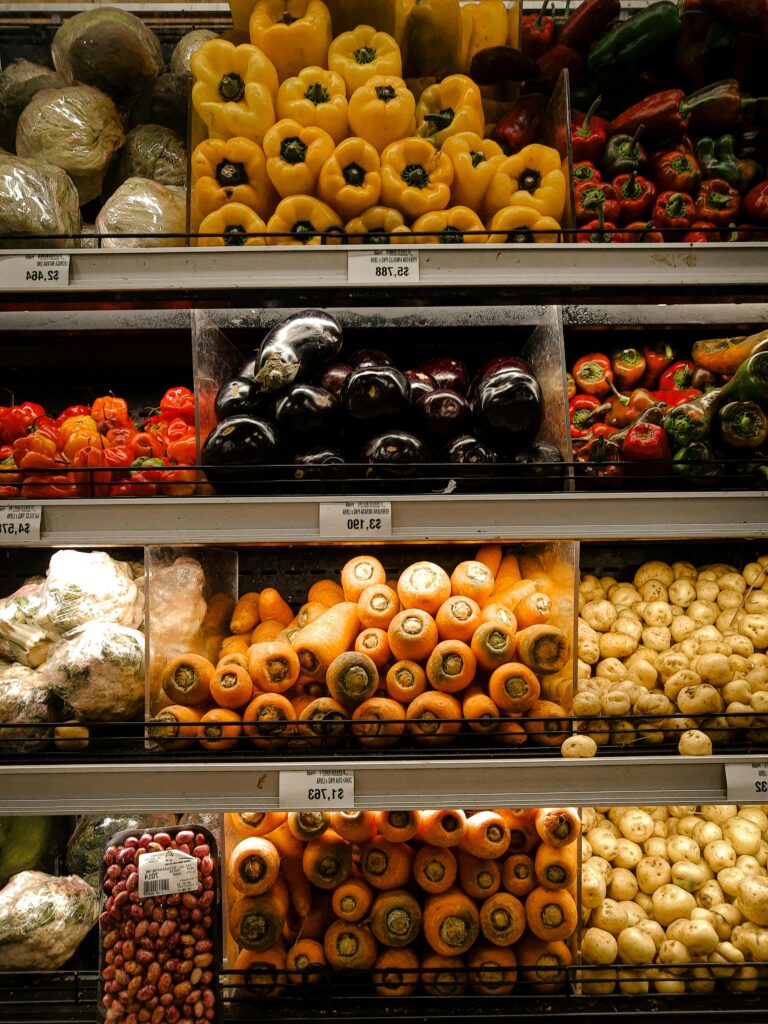
Gochugaru Around the World
As Korean cuisine gains popularity on the global stage, so too does the demand for gochugaru. Beyond its traditional uses in Korean dishes, gochugaru has found its way into fusion cuisine, where it adds a unique twist to familiar flavours. Chefs and home cooks alike experiment with gochugaru, incorporating it into non-Korean dishes to infuse them with a touch of Korean flair. From spicy gochugaru-infused pizzas to tangy gochugaru-spiked cocktails, the possibilities are endless. As gochugaru continues to captivate taste buds around the world, it serves as a testament to the universal appeal of Korean flavours and the enduring legacy of gochugaru in shaping the culinary landscape.

Conclusion
In conclusion, gochugaru stands as a testament to the enduring legacy of Korean cuisine, weaving together tradition, flavour, and culture in every fiery bite. From its humble origins to its global reach, gochugaru has transcended its role as a mere spice to become a symbol of Korean identity and pride. Whether enjoyed in a steaming bowl of kimchi jjigae or sprinkled atop a sizzling plate of bulgogi, gochugaru infuses every dish with its distinctive character, inviting diners on a sensory journey through the rich tapestry of Korean gastronomy. As we celebrate the magic of gochugaru, let us savour its flavours, cherish its history, and embrace its role in shaping the vibrant mosaic of global cuisine.
